| Title | Pages |
|---|---|
| Anti-tyrosinase Activities and in silico ADME Properties of Fluorine-containing 1,2,4-triazole-5-on Derivatives In this study, inhibition potentials of fluorine-containing 1,2,4-triazole-5-one derivatives (2a-b, 3a-b, 4a-d, 5a-b, 6a-b, 7a-b, 8a-b, 9a-b) on the activity of clinically significant tyrosinase enzyme were investigated. The IC50 values of the compounds were calculated. The type of inhibition and Ki value of the compound showing the best inhibition feature among the compounds were determined. Kinetic experiments were carried out after identifying the optimum reaction conditions for commercially available mushroom tyrosinase and it was defined that the compound with the lowest IC50 value was 8b. 8a-b and 9a-b (IC50 values 32.2±0.7 μM; 22.9±0.6 μM; 22.8±0.5 μM; 23.8±0.6 μM, respectively) have been found to have a highly efficient inhibitory property on tyrosinase activity when compared to kojic acid (IC50 value 45.7±0.9 μM) as the reference inhibitor compound. The inhibition mechanism for the 8b was stated to be noncompetitive and the Ki was determined as 6.09 μM. In addition, the ADME properties of all compounds were examined and it was defined that each compound has a high potential as a drug candidate molecules. As a result of these, 8a-b and 9a-b can be considered as highly effective and promising inhibitor compounds against tyrosinase activity. 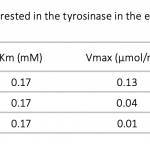
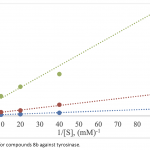
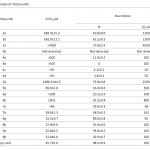

|
319 - 324 |
| Effects of Molecular Weight of Dextran on Dynamic Mechanical Properties in Functional Polymer Blend Systems Blending of natural/synthetic polymers is one of the most practical way to obtain a new material with desired properties such as thermal, mechanical and dynamic mechanical properties. Dynamic mechanical analysis (DMA) is a strong method to investigate the mechanical/viscoelastic properties, thermal transitions and compatibility in these polymer blend systems. In this study, biocompatible T10 and T40 dextran (DEX) and polymethacrylamide (PMAM) blend systems were prepared by solution casting method. Variations of dynamic mechanical properties including storage modulus (SM), loss modulus (LM) and tan δ of the DEX/PMAM blends were investigated for all samples at a specific fixed frequency of dynamic mechanical loading in a certain temperature range. The SM of the pristine polymers increased in the following order: PMAM<DEX10<DEX40. Thermal transitions and α-relaxations were observed from results of DMA measurements. In general, a single glass transition temperature was observed in binary blend systems. Glass transition temperatures increased with increasing molecular weight of DEX in 50/50 wt.% blend systems. It was found that temperature dependence of dynamic mechanical properties and curves exhibit typical behaviors and strongly depended on the molecular weight, intra- and intermolecular interactions due to the hydrogen bonding in these blend systems. 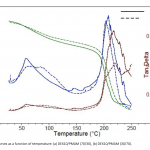
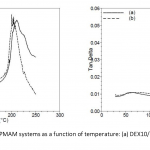
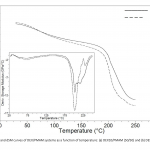
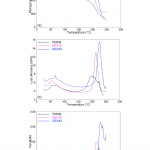
|
325 - 333 |
| Green Synthesis of Silver Nanoparticles Using Walnut Shell Powder and Cynara sp. and their Antibacterial Activities The silver (Ag) is a well-known material with interesting properties (i.e. catalytic activity, antimicrobial, etc.). The nano-sized particles of silver propose enhanced properties due to having relatively higher surface areas. The green synthesis is a promising way of material preparation/production being relatively more environmentally friendly by utilization of less harmful materials. In this work, the plant extracts (Cynara & Walnut shell powder) were used as reaction media for the synthesis of silver nanoparticles (Ag NPs). The nanoparticles produced via two plant extracts were ~46 nm and ~109 nm in size, respectively. The antibacterial activities of the produced silver nanoparticles (against E. coli and S. aureus species) were determined and minimum effective concentrations (MIC) for antibacterial activity were investigated. 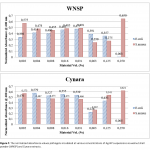
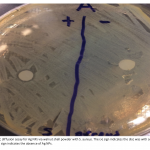

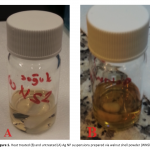
|
335 - 347 |
| siRNA targeting ABCB1 potentiates the efficacy of chemotherapy in human triple-negative breast cancer cells Diminishing the efficacy of chemotherapy because of multidrug resistance (MDR) is a major clinical problem for triple-negative breast cancer (TNBC). MDR often occurs by overexpression of ATP-binding cassette B1 (ABCB1) protein that effuses various anticancer drugs from cancer cells. One of the newly developed techniques to address MDR is to knockdown ABCB1 by RNA interference (RNAi). RNAi is a gene-silencing process in that small interfering RNA (siRNA) blocks the expression of desired genes with high efficiency/specificity. The aim of this work is to examine the impact of ABCB1 inhibition via specific siRNAs on the efficacy of paclitaxel or etoposide in TNBC cells. The toxicity of increasing paclitaxel and etoposide concentrations on MDA-MB-231 cells was assessed using the MTT test. Cells were then cotreated with paclitaxel or etoposide in combination with ABCB1-siRNA, followed by cytotoxicity, colony formation, and migration assays. The administration of ABCB1-siRNA with paclitaxel or etoposide exhibited a synergistic effect and siRNA-drug treatments markedly reduced viability, clonogenicity, and migration of TNBC cells compared to siRNA or drug alone. Overall, these results indicate that TNBC cells become vulnerable even to sub-toxic doses of paclitaxel and etoposide after ABCB1-siRNA transfection, representing a promising approach to enhance the influence of chemotherapy in TNBC. 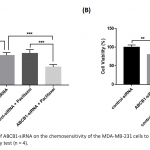
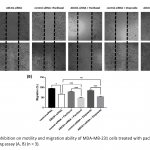
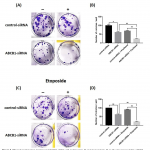
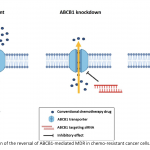
|
349 - 358 |
| Synthesis of Epoxy Functional Porous POSS Microparticles Epoxy-functional porous polyhedral oligomeric silsesquioxane (POSS) microparticles were synthesized by templated polymerization in two steps by using monodisperse 2μm poly(GMA) seed latex particles as a template. In the first step, templated polymer latex was swollen in emulsion medium to obtain micron size porous POSS particles. In the second step, the hydrophobic monomers metharcyl-POSS, epoxy-functional monomer glycidyl methacrylate (GMA), the crosslinking agent glycerol dimethacrylate (GDMA), and the thermal initiator diffused into the swollen template in emulsion medium for free-radical polymerization. The resultant poly(POSS-co-GDMA-co-GMA) microparticles were obtained in polydisperse form due to the high molecular weight of the silica cage core of POSS created difficulty in the diffusion step. However; monodisperse composite microparticles were obtained around 5.8 ± 0.4μm in size via centrifugal post-separation. The spherical fine porous hybrid structure was fully characterized as morphological, thermal, chemical composition, and crystalline form by SEM, TGA, FTIR, and XRD respectively. 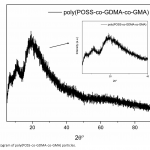
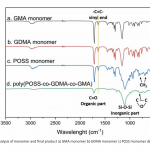
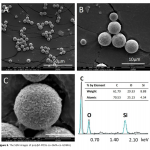
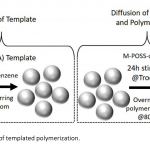
|
359 - 366 |
| How mesenchymal stem cell conditioned media affect the HeLa cells on Wnt/ beta-catenin signaling, Notch-1 signaling, and apoptosis? This study aims to investigate the influence of mesenchymal stem cells (MSCs) cell-conditioned media (MSCs-CM) on the Wnt/beta-catenin and Notch-1 signaling as well as the apoptosis in cervical cancer cells. Conditioned media of characterized MSCs were freshly collected and filtered before use. HeLa cells cultured standard conditions and treated with MSCs-CM 24, 48, 72 hours. Untreated cells serve as a control. Cell viability measured with MTT assay for all incubation periods. Immunocytochemical staining of beta-catenin, Notch-1 and cleaved caspase 3 were performed for each time-point. MTT cell viability, AO/PI, and immunocytochemical staining of cleaved caspase 3 results showed that through all incubation periods, there was no statistically significant difference between the MSCs-CM treated HeLa cells and the controls (p>0.05). Beta-catenin immunoreactivity was upregulated following treatment from 24 hours to 48 and 72 hours (p<0.001), however a significant decrease in Notch-1 receptor expression after MSCs-CM treatment independent of time (p<0.001). This study demonstrated that MSCs-CM has no cytotoxic and proliferative effects on HeLa cells. However, treatment with MSCs-CM enhanced the activity of Wnt/beta-catenin signaling via the accumulation of beta-catenin and decreased Notch-1 signaling in HeLa cells. Further analyses that identify regulatory factors of these pathways may provide promising opportunities for cervical cancer therapy. 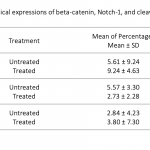
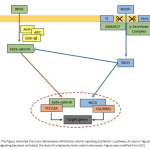
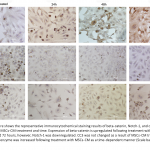
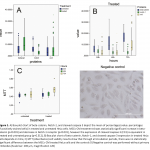
|
367 - 375 |
| An Efficient One-Pot Three-Component Synthesis of Novel Quinazoline-4 Carboxylic Acid and Its Ester and Amide Derivatives Aseries of novel quinazoline derivatives, which may be drug candidates, were synthesized, and their structures were characterized by IR, 1H NMR, 13C NMR and Q-TOF LC/MS spectrometry. First, 2-(4-chloro-phenyl)-quinazoline-4-carboxylic acid (2) was synthesized from a one-pot three-component condensation reaction of (2-amino-phenyl)-oxo-acetic acid so- dium salt obtained from alkaline hydrolysis of isatin (indole-2,3-dione) with 4-chlorobenzaldehyde and ammonium acetate. The carboxylic acid compound 2 allowed the synthesis of the ester, acid chloride and amide derivatives. New quinazoline ester derivatives (3-6, 8) were synthesized by the reactions of compound 2 and various alcohols. Quinazoline amide derivatives (9-13) were then obtained from the reaction of different aliphatic and aromatic amines and 2-(4-chloro-phenyl)-quinazoline-4-carbonyl chloride (7) formed from the reaction of SOCl2 and compound 2. 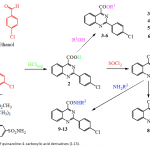
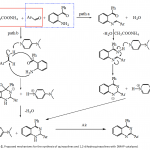
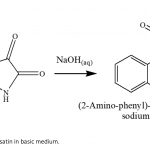
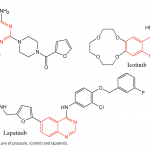
|
377 - 386 |
| Evaluate the Effect of Calcium Chloride Plus Sodium Alginate Treatment on Button Mushroom During Storage In this study, distilled water (control), 1% calcium chloride (CaCl2) (w/v), 1% sodium alginate (w/v), and combination with 1%CaCl2 +1% sodium alginate(w/v) solutions were sprayed on freshly harvested button mushrooms. Treated mushrooms were stored in polypropylene boxes during 20 days at 4±1°C. Physical and chemical properties of treated mushrooms were investigated at five days intervals during storage. The present results showed that treatment of 1% CaCl2 revealed close effectiveness on weight loss, with 1.21%, L* color value with 81,76, the and cap opening percentage with 11%. minimum decrease in firmness with 2.2 N of the mushrooms compared to other treatments at end of storage. The experiment results could suggest the 1% CaCl2 application for mushroom quality and shelf life were more observable up to 15 days. 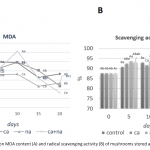
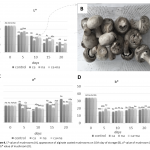
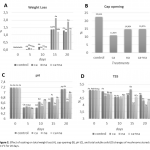
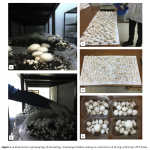
|
387 - 396 |
| Green Synthesis of Silver Nanoparticles Using Salvia Fruticosa Mill. Extract and the Effect of Synthesis Parameters on Their Formation, Antioxidant, and Electro- Catalytic Activity Among green synthesis methods, which are an eco-friendly, non-toxic, simple, and safe approach for the synthesis of silver nanoparticles (AgNPs), using plant extract is the most efficient method. Salvia fruticosa Mill. which was not used formerly was selected for this research. By changing the synthesis parameters (the amount of extract, extract concentration, and silver ion concentration in precursors), their effects on the formation and structure of nanoparticles were investigated by UV-visible spectroscopy, transmission electron microscopy and Fourier transform infrared spectroscopy techniques. The antioxidant activity of extracts and AgNPs was evaluated by performing DPPH (2,2 diphenyl-1-picrylhydrazyl) assay. It is observed that the phytosynthesized nanoparticles also possess antioxidant potentials. Finally, AgNPs were used as modifiers for carbon paste electrode (CPE) and their effect on charge transfer resistance and the ascorbic acid signal was investigated by using electrochemical impedance spectroscopy (EIS), cyclic voltammetry (CV), and square wave voltammetry (SWV). E1-1/CPE showed good electro-catalytic oxidation of ascorbic acid and can be utilized for the development of the new sensors. According to the results, in the process of green synthesis of AgNPs, synthesis parameters are vital as they change not only the size and size distribution of the AgNPs but also their antioxidant activity and electrochemical properties. 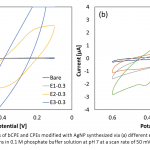
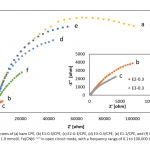
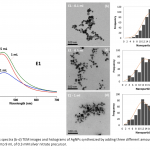
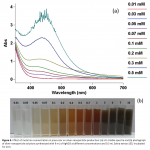
|
397 - 414 |
| Faunistic and Zoogeographic Studies on the Family Coccinellidae (Coleoptera) of Ankara province (Turkey) The main aim of this study is to determine the Coccinellidae fauna of Ankara. For this purpose, field studies were carried out in May-October 2018 and April-October 2019 in Ankara. 5310 specimens were collected. Totally 38 species belonging to 20 genera were identified. Faunal similarity and species diversity of districts of Ankara province are compared. The distribution of the species in the Palearctic Region, its subregions, and the geographical regions of Turkey were evaluated. 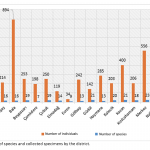
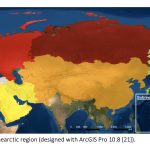

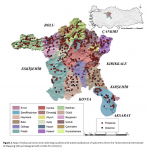
|
415 - 432 |